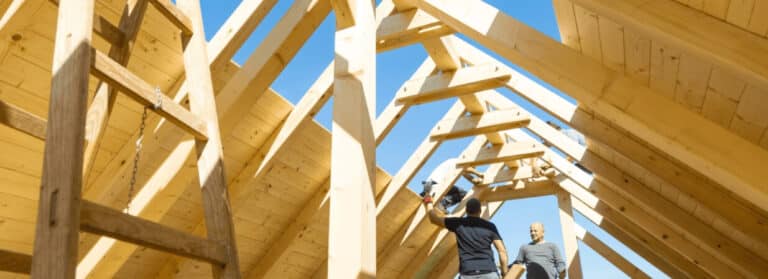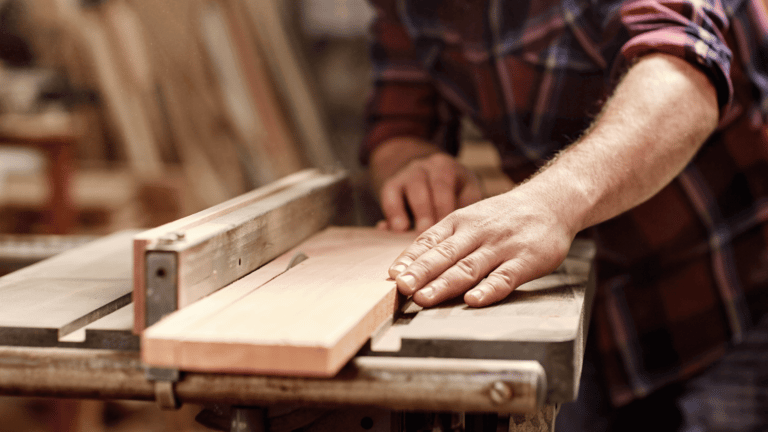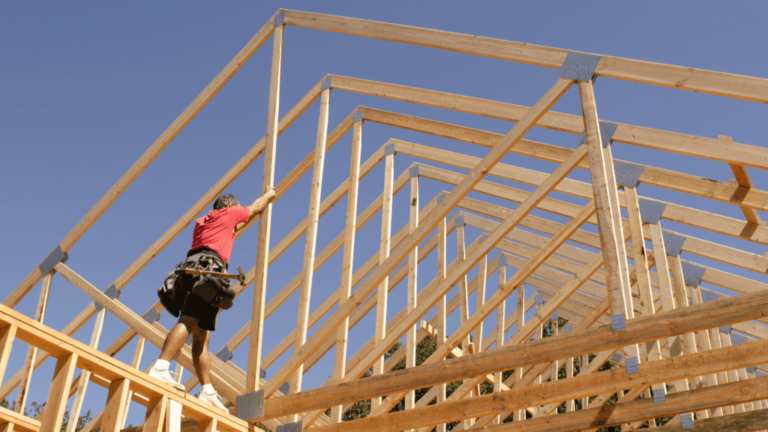Custom builders looking to manage the cost of new builds and remodels using new construction materials are increasingly using online tools to track availability and cost so that they can help homeowners get the highest quality build while staying on budget.
In fact, one in three pro builders switch material brands at the time of purchase and make this decision increasingly via online ordering, according to a 2022 industry study from The Farnsworth Group.
With inflation expected to keep the cost of construction materials high well into 2023, builders will need to continue to advise their homeowner clients on how building materials impact the final cost to build their home. Builders having quick access to the latest pricing on new construction materials will have an advantage over their competitors when it comes to accurately quoting customers.
As you track the latest material trends, keep in mind that 66% of homebuyers rate sustainability as important to their purchasing decisions. Here are some of the product categories homeowners are likely to ask that you research and price in their quote:
New building materials for sustainable roofing
Solar
Homeowners increasingly ask about rooftop solar panels as an optional material for boosting the sustainability of their new home. By 2030, about 13% of U.S. homes will have a solar photovoltaic system to generate electricity.
This is fueled in part by mandates that builders in some states need to be aware. For instance, in California, new single-family homes up to three stories must have enough solar generation to meet the home’s annual power needs. Builders can install smaller solar systems if battery storage or other energy-saving initiatives are part of the home’s design.
Worldwide, other countries are adopting solar into residential construction at a pace largely based on local electricity prices and area weather conditions. In Australia, 31% of homes have some kind of solar system for generating power, and that country’s government hopes to grow the percentage to 50% by 2030.
Solar panels have expensive upfront installation costs and can be tricky to finance with a mix of government incentives; so many homeowners interested in environmental sustainability opt for more traditional material choices. Included among these are:
Insulation
Renewable and recycled materials like sheep’s wool and denim are increasingly becoming options for insulation, but builders can consider certain plastics and spray foams because of their greater efficiency to resist heat and to seal leaks and drafts.
Radiant barriers
Many custom home designs now call for radiant barriers beneath the outermost roofing material. Silver-colored barriers help reflect heat away from the attic, where the temperature rises as heat flows to the interior space from the outer building material.
Modern shingles and tiles
Homeowners are increasingly asking for more options beyond asphalt shingles, which are a byproduct of oil refining. Metal roofs do a good job reflecting heat, can be made from recycled material, and offer different designs using options like rugged, lightweight corrugated sheets.
Other composite building material made from recyclables like plastic and rubber mimic the appearance of shingles made from cedar, clay and slate. These materials come from naturally occurring resources but have drawbacks. Cedar is subject to mold and mildew, while clay and slate are both supremely durable but are heavy and difficult to install.
The wider construction material landscape
Concrete alternatives
Cement needed to make concrete for constructing buildings emits a large amount of carbon dioxide (CO2) during the manufacturing process. In fact, climate researchers say up to 8% of global carbon emissions come from concrete manufacturing. Alternatives to concrete to combat carbon emissions include ByBlocks made from plastic waste, bioconcretes like the one from Prometheus Materials that uses microalgae as a binding agent, and Ashcrete made from the byproducts of coal-fired power plants.
Other concrete advancements are helping reduce the overall need for the building material. For instance, there is bendable concrete, also known as Engineered Cementitious Concrete. Developed by a team at the University of Michigan departments of civil and environmental engineering, this fiber-reinforced material has greater strength than traditional materials.
Bendable concrete under extreme stress is better able to hold a structure, such as load bearing walls, without cracking because it can “give” in much the same way as plastic.
Another concrete advancement is self healing cement or self healing concrete. The idea behind self healing concrete is that naturally occurring proteins added to the material give the concrete the ability to form calcium carbonate. The calcium carbonate forms when exposed to CO2. The material fills the small cracks as they appear over time in concrete.
Redefined finishing materials
Designers and builders commonly use wood, stone, brick and glass for the architectural finishes that give custom homes thier unique look. Increasingly homeowners are looking to materials like bamboo and cork for flooring and wall coverings and engineered quartz for countertops.
Because bamboo is fast-growing, requires little water, and can have the same appearance as wood, it also is an increasing option among engineered flooring products.
The changing uses of steel and wood
Steel increasingly is becoming an alternative to aluminum and plastic when manufacturing doors and windows. Steel window frames and doors are stronger, do a better job insulating against moisture and can be made from recycled materials to reduce carbon emissions.
Because steel is energy intensive to manufacture and transport, the construction industry is looking for new ways to replace structural steel with lighter engineered wood building materials, know as mass timber.
One new thought is to use mass timber to replace steel and concrete support structures. Glue laminated timber can create support beams, and cross laminated timber forms strong building panels for floors and walls.
Yet another possible future use of wood is surprisingly in the manufacture of window glass. Transparent wood is made possible by chemically treating thin layers of balsa wood and is said to have greater insulation properties than traditional glass.
Sourcing sustainable materials
Finding a trusted supplier of sustainable building materials can be time-consuming. It’s best to begin with your current network of suppliers to see what sustainable products they offer. Before researching and quoting with any reputable supplier, it’s best to know precisely the type and amounts of material you need for your project.
It’s important to know your project’s material counts before you request a quote because some suppliers have minimum and maximum order quantities when it comes to purchasing sustainable construction materials.
Be sure you have detailed plans from which to work. With modern construction estimating software, you can quickly perform a material takeoff to calculate all the various materials needed. With this in hand, you can then begin speaking to suppliers about sourcing materials.
Keep in mind that third-party organizations, such as the Forest Stewardship Council, certify timber and wood products to ensure manufacturers source in a manner that best prevents deforestation. Ask your favorite supplier if they provide these certified construction materials.
Supplier collaboration is key
As you can see, collaboration with your supplier is critical when purchasing sustainable construction materials. But supplier collaboration can help with all facets of your project.
Today, online software tools allow you to submit material quotes online so that you can have the latest pricing information without all the wasted time that comes from leaving unreturned phone messages and emails that get lost in the shuffle.
When you hear back from your supplier faster, you can accurately quote your customers with a professional, detailed estimate that beats the competition.
Revolutionizing the Construction Industry
Today, home builders like you are using modern software as their go-to source for estimating. Buildxact offers an all-in-one platform for takeoffs, estimates, quoting and job management.
Learn more about Buildxact pricing, or begin working today with a friendly Buildxact team member. Book a demo or start working with templates right away with a 14-day free trial.


























